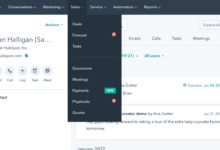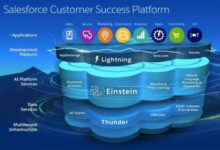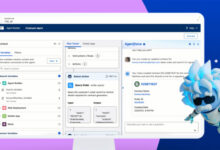CRM System Pricing: 7 Shocking Truths You Must Know in 2024
Navigating CRM system pricing can feel like decoding a secret code. With so many plans, tiers, and add-ons, it’s easy to get overwhelmed. But understanding the real costs—and hidden fees—can save your business thousands.
Understanding CRM System Pricing: The Basics

Customer Relationship Management (CRM) systems are essential tools for businesses aiming to streamline sales, marketing, and customer service. However, one of the biggest hurdles companies face is understanding how CRM system pricing works. It’s not just about monthly fees—there are layers of complexity, from user-based models to feature-limited tiers.
What Is a CRM System?
A CRM system is software designed to manage all your company’s interactions with current and potential customers. It helps businesses stay connected, streamline processes, and improve profitability. CRMs store customer data, track interactions, automate marketing, and support sales pipelines.
Popular platforms like Salesforce, Zoho CRM, and HubSpot CRM offer robust tools, but their pricing varies widely based on functionality and scale.
Why CRM System Pricing Matters
Choosing the wrong CRM can lead to overspending or underutilization. A small business might pay for enterprise-level features it doesn’t need, while a growing startup might outgrow a basic plan too quickly. Understanding CRM system pricing helps you align your investment with your business goals.
- Prevents budget overruns
- Ensures scalability
- Reduces long-term churn
“A CRM should grow with your business, not hold it back.” — TechCrunch, 2023
Types of CRM System Pricing Models
CRM vendors use different pricing structures to cater to various business sizes and needs. Knowing these models is crucial to making an informed decision.
Per-User Pricing
This is the most common CRM system pricing model. You pay a set fee for each user per month. For example, Salesforce Sales Cloud starts at $25/user/month, while HubSpot charges $45/user/month for its Professional tier.
The advantage? Predictable costs based on team size. The downside? Costs escalate quickly as your team grows. A 50-person sales team on a $50/user plan would spend $30,000 annually—before add-ons.
Tiered Feature-Based Pricing
Vendors offer multiple tiers (e.g., Free, Starter, Professional, Enterprise), each unlocking more features. Zoho CRM, for instance, has a free plan for up to 3 users, then $14/user/month for Standard, rising to $52/user/month for Enterprise.
This model allows businesses to start small and upgrade as needed. However, feature gaps between tiers can force companies into higher-priced plans prematurely.
Flat-Rate and Unlimited Plans
Some CRMs, like Insightly, offer flat-rate pricing for unlimited users at a fixed cost. Insightly’s Plus plan is $29/month for unlimited users, ideal for small teams with fluctuating staffing.
While attractive, these plans often limit advanced features like automation or integrations, making them less suitable for complex operations.
Key Factors That Influence CRM System Pricing
CRM system pricing isn’t arbitrary. Several factors determine how much you’ll pay—and why prices vary so much between platforms.
Number of Users
Most CRM vendors scale pricing linearly with the number of users. This makes sense for collaboration-heavy tools, but it can become a financial burden. Some providers offer volume discounts for 100+ users, but these are rarely advertised upfront.
For example, Microsoft Dynamics 365 offers custom enterprise quotes, often reducing per-user costs significantly at scale—but only if you negotiate.
Feature Set and Functionality
Advanced features like AI-powered analytics, workflow automation, and telephony integration dramatically increase CRM system pricing. Salesforce Einstein AI, for instance, adds $50/user/month to certain plans.
- Basic CRMs: Contact management, task tracking
- Mid-tier: Email integration, lead scoring, reporting
- Enterprise: AI insights, custom code, API access
The more sophisticated the tool, the higher the price. Businesses must assess which features they actually need versus want.
Deployment Type: Cloud vs. On-Premise
Cloud-based CRMs (SaaS) dominate the market due to lower upfront costs and easier maintenance. Pricing is typically subscription-based. On-premise CRMs, like older versions of SAP CRM, require large upfront licensing fees and IT infrastructure.
While cloud CRM system pricing appears cheaper initially, long-term subscriptions can exceed on-premise costs over 5+ years. However, cloud solutions offer faster updates and remote access—critical in today’s hybrid work environments.
Hidden Costs in CRM System Pricing
The advertised price is rarely the final cost. Many businesses are shocked by unexpected fees after implementation.
Implementation and Onboarding Fees
Enterprise CRMs often charge thousands for setup. Salesforce implementation can cost $10,000–$100,000 depending on complexity. Even mid-tier vendors like HubSpot may charge for data migration or custom training.
These fees cover configuration, data import, user training, and integration with existing tools. Skipping professional onboarding can lead to poor adoption and wasted investment.
Integration and API Costs
Connecting your CRM to email, marketing automation, or ERP systems often incurs extra charges. Some platforms limit API calls in lower tiers. Exceeding these limits results in overage fees or throttled performance.
For example, Pipedrive’s Advanced plan includes 100,000 API calls/month, but higher usage requires a custom quote. This can catch fast-growing companies off guard.
Customization and Add-Ons
Need a custom dashboard? A unique workflow? Most CRMs charge extra for advanced customization. Salesforce AppExchange apps can cost $50–$500/month each. Zoho Creator, used for building custom modules, is a separate $25/user/month add-on.
“The real cost of a CRM isn’t the monthly fee—it’s the ecosystem you build around it.” — Gartner, 2023
Top CRM Platforms and Their Pricing Breakdown
Let’s compare leading CRM systems to understand how CRM system pricing plays out in real-world scenarios.
Salesforce: The Enterprise Leader
Salesforce dominates the CRM market with powerful features—but at a premium. Its Sales Cloud pricing starts at $25/user/month (Essentials), $75 (Professional), $150 (Enterprise), and $300 (Unlimited).
- Essentials: Basic sales automation
- Professional: Email integration, reporting
- Enterprise: Customization, API access
- Unlimited: 24/7 support, advanced analytics
Additional costs: Marketing Cloud ($400+/month), Service Cloud ($25–$150/user), and Einstein AI ($50/user). Total enterprise deployments often exceed $100,000/year.
HubSpot: The All-in-One Contender
HubSpot offers a free CRM with generous features, making it ideal for startups. Paid plans start at $45/user/month (Starter), $450/month (Professional), and $1,200/month (Enterprise).
Unlike per-user pricing for Sales Hub, Marketing Hub is priced per contact tier (up to 1M contacts). This can be cost-effective for high-volume email campaigns.
Pros: Intuitive interface, seamless HubSpot ecosystem. Cons: Enterprise plan lacks some advanced automation found in competitors.
Zoho CRM: The Budget-Friendly Powerhouse
Zoho CRM is a favorite among SMBs. Free for up to 3 users. Paid plans: Standard ($14), Professional ($23), Enterprise ($40), Ultimate ($52)—all per user/month.
Zoho’s strength lies in its ecosystem. Zoho One bundles 40+ apps (CRM, email, finance) for $37/user/month, offering massive value for businesses already using Zoho tools.
Downside: Interface can feel cluttered, and support is slower than premium vendors.
How to Choose the Right CRM Based on Pricing
Selecting a CRM isn’t just about the lowest price—it’s about value, fit, and long-term ROI.
Assess Your Business Size and Needs
Small businesses should prioritize affordability and ease of use. A free or low-cost CRM like Zoho or HubSpot Free may suffice. Mid-sized companies need scalability—look for tiered plans with clear upgrade paths.
Enterprises require robust security, customization, and integration. While Salesforce or Microsoft Dynamics may seem expensive, their long-term efficiency gains often justify the cost.
Calculate Total Cost of Ownership (TCO)
Don’t just look at monthly fees. Calculate TCO over 3–5 years, including:
- Subscription costs
- Implementation and training
- Integration fees
- Custom development
- Support and renewal increases
For example, a $30/user/month CRM for 20 users costs $7,200/year. With $5,000 in setup and $2,000 in annual integrations, TCO hits $14,200 in year one—more than double the subscription.
Negotiate and Leverage Discounts
Never accept the listed price. Most vendors offer discounts for annual payments (10–20% off), non-profits, or long-term contracts. Salesforce resellers often provide better deals than direct sales.
Ask for:
- Free onboarding
- Extended trials
- Bundled add-ons
- Price matching
Pro tip: Timing matters. Vendors are more likely to discount at quarter-end to meet sales targets.
Future Trends in CRM System Pricing
The CRM landscape is evolving, and pricing models are following suit.
Rise of AI and Automation Pricing
AI features like predictive lead scoring, chatbots, and sentiment analysis are becoming standard—but often as paid add-ons. Expect CRM system pricing to shift toward usage-based AI models, where you pay per AI interaction or insight generated.
For example, Salesforce charges extra for Einstein AI, and Microsoft Dynamics includes AI in higher tiers only.
Usage-Based and Consumption Models
Some startups are experimenting with pay-per-use CRM pricing. Instead of per-user fees, you pay based on emails sent, calls logged, or deals closed. This could benefit seasonal businesses or sales teams with variable activity.
While not mainstream yet, companies like Freshsales are testing hybrid models that blend flat fees with usage caps.
Open Source and Low-Cost Alternatives
Open-source CRMs like SuiteCRM and EspoCRM offer free software with optional paid support. These are ideal for tech-savvy teams wanting full control without vendor lock-in.
However, they require in-house IT resources for maintenance, which can offset savings. Total cost may still rival commercial CRMs if you factor in developer time.
Strategies to Reduce CRM System Pricing Costs
You don’t have to break the bank to get a powerful CRM. Smart strategies can cut costs significantly.
Start Small and Scale Gradually
Begin with a free or entry-level plan. Use the trial period to test core features. Upgrade only when you hit usage limits or need advanced functionality.
Example: A 5-person startup can start with HubSpot Free, then move to Starter at $45/month when they need email sequencing.
Bundle Services and Leverage Ecosystems
Platforms like Zoho One or Oracle CX Unity offer bundled suites at a fraction of the cost of buying tools separately. Zoho One includes CRM, email, invoicing, and project management for $37/user/month.
Bundling reduces vendor sprawl, simplifies billing, and often includes better support.
Monitor Usage and Optimize Licenses
Regularly audit user activity. Deactivate licenses for inactive team members. Consolidate roles to avoid paying for overlapping features.
One company saved $18,000/year by reducing unused Salesforce licenses from 75 to 52 after an internal review.
What is the average cost of a CRM system?
The average CRM system pricing ranges from free (for basic plans) to $300/user/month for enterprise solutions. Most small to mid-sized businesses pay between $12 and $50/user/month. Annual costs for a 10-person team typically range from $1,440 to $6,000, not including implementation or add-ons.
Are there any truly free CRM systems?
Yes, several CRMs offer free plans with solid functionality. HubSpot CRM, Zoho CRM, and Freshsales provide free tiers with contact management, email tracking, and basic automation. These are ideal for startups and solopreneurs, though they may limit features like reporting or integrations.
Why do CRM prices vary so much?
CRM system pricing varies due to features, scalability, deployment type, and target market. Enterprise CRMs charge more for advanced security, customization, and support. Open-source options are cheaper but require technical expertise. Pricing also reflects brand reputation and ecosystem integration.
Can I negotiate CRM pricing?
Absolutely. Most vendors are open to negotiation, especially for annual commitments or large teams. You can often secure discounts, free onboarding, or bundled features. Working with a reseller instead of direct sales may also yield better deals.
What is the most cost-effective CRM for small businesses?
Zoho CRM and HubSpot CRM are widely regarded as the most cost-effective for small businesses. Zoho offers deep functionality at low prices, while HubSpot provides a user-friendly interface and powerful free tier. Both scale affordably as your business grows.
Understanding CRM system pricing is essential for making a smart investment. From per-user fees to hidden implementation costs, the true price of a CRM goes beyond the monthly subscription. By evaluating your needs, calculating total cost of ownership, and leveraging negotiation tactics, you can find a solution that delivers maximum value without overspending. As AI and usage-based models reshape the market, staying informed will help you adapt and thrive.
CRM system pricing – CRM system pricing menjadi aspek penting yang dibahas di sini.
Further Reading:


